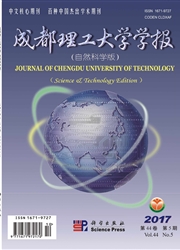

 中文摘要:
中文摘要:
根据地震资料、沉积格局分析和最大位移-长度拟合图、位移-距离曲线,探讨了二连盆地赛汉塔拉凹陷的断裂生长演化特征,并分析其与油气的关系。结果表明,赛汉塔拉凹陷边界断裂在阿尔善组沉积期分为3段独立生长,腾一段沉积期,南、中2段发生连接;腾二段沉积期,整个断层完成连接。Ⅱ级断裂平面上呈斜列展布,构成分段连接样式,主要经历了独立生长阶段、软连接阶段和软连接复杂化阶段。断裂生长演化过程中形成的变换构造带发育储集性能好的储集层,再配以断层连接作用形成的生油岩、盖层和圈闭,从而形成有利的油气聚集区。
 英文摘要:
英文摘要:
Based on the seismic data,sedimentary pattern analysis,maximum displacement-lengthfitting diagram and displacement-distance evolution profile,the evolution of fault and its control on oil-gas in Saihantala sag are studied.It reveals that the growth of the boundary fault experienced following stages:(1)During the sedimentary period of Aershan Formation,it could be divided into 3segments with independent growth;(2)During the sedimentary period of first Member of Tenger Formation,the south and mid segment linked together;(3)During the sedimentary period of second Member of Tenger Formation,the three segments grows into a whole fault.The second class faults occurred as echelon shapes,formed a typical segment linkage mode in the plane.The growth and evolution experience independent growth stage,soft connection and flexible connection stage respectively.The transfer zone formed in the process of fault growth and segment linkage results in high-quality reservoir rock,with corresponding source rock,cap rock and trap,eventually creating favorable hydrocarbon accumulation.
 同期刊论文项目
同期刊论文项目
 同项目期刊论文
同项目期刊论文
 期刊信息
期刊信息
